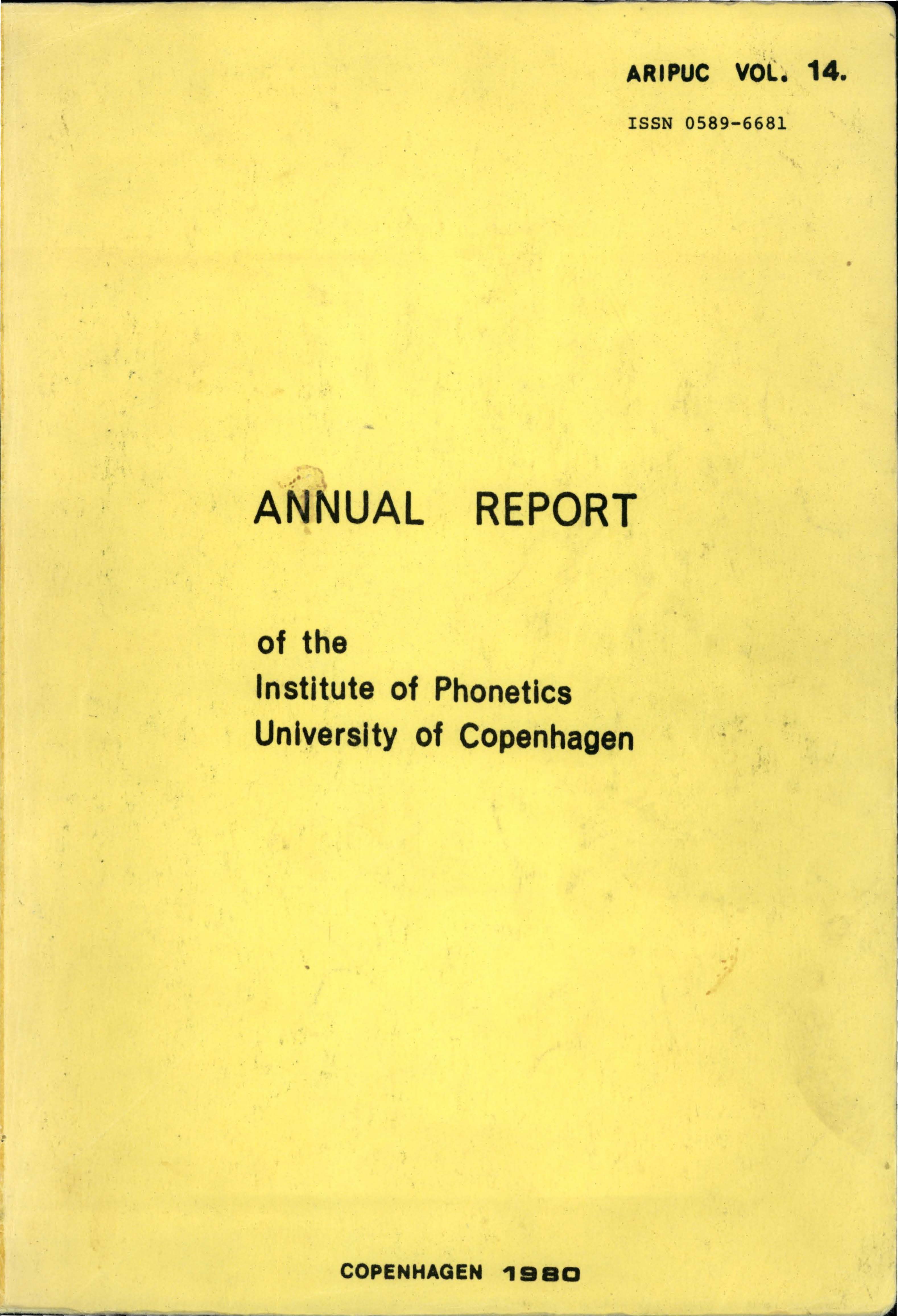Coarticulation of inherent fundamental frequency levels between syllables
DOI:
https://doi.org/10.7146/aripuc.v14i.131744Abstract
In Advanced Standard Copenhagen (ASC) Danish the inherent Fo level differences between high and low vowels are of an order of magnitude comparable to that of the Fo deflection in the stress groups. In theory, this could imply that the intended stress distribution in an utterance might be perceived incorrectly, since the inherent Fo level variation could distort the linguistically relevant Fo pattern in the stress groups. It was hypothesized that such distortion is compensated for by coarticulation of inherent Fo levels between syllables. Experiments carried out to test this hypothesis showed that Fo level in one vowel is consistently influenced by vowel height in the preceding syllable, being higher after a high than after a low vowel. There seems to be no consistent influence from the succeeding vowel. The greatest amount of compensation is found in the first posttonic vowel in the stress group, and it occurs whether the consonant between the two vowels is a sonorant (m) or a voiceless fricative (f). Formant measurements of first posttonic ɑ showed that the formant frequencies are influenced (although slightly) by both the preceding and the following vowels. An explanation of the discrepancy between the manner in which vowel quality (and hence tongue body position) and the manner in which Fo is influenced by adjacent vowels is attempted in terms of a spring-mass model describing the relation between the tongue body and the laryngeal structures.
Downloads
Published
How to Cite
Issue
Section
License
Copyright holder author

